“There was still a little green in the grasses, and the dry tops of the fall grasses genuflected in the wind.” —Paul Gruchow
*******
It’s the last Tuesday in October on the prairie. What an incredible week it’s been! No tricks. Lots of treats.

Let’s go for hike and see.

I’m hiking close to a planted prairie kame, a mound of gravel and sand deposited by the glaciers.

Prairie kames seem to pop up lately, wherever I hike. Earlier this month, it was a kame in Kane County. (Try saying that three times fast). Today, it’s a kame here at the DuPage County Forest Preserve.
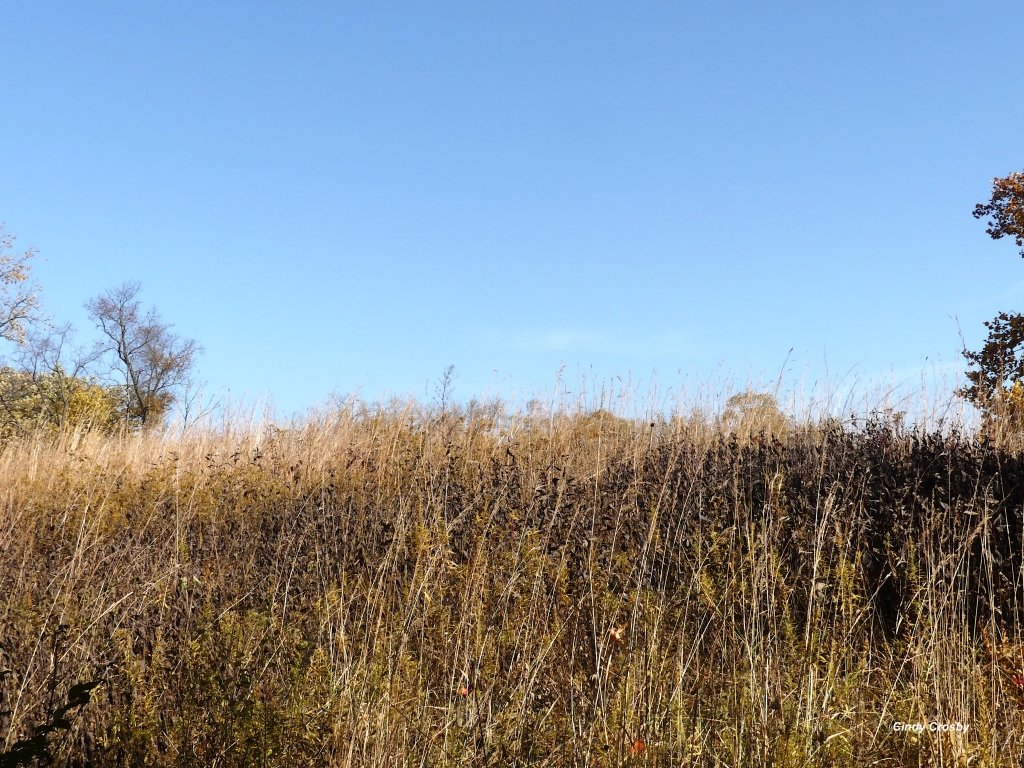
Two kames in one month? A welcome occurrence.
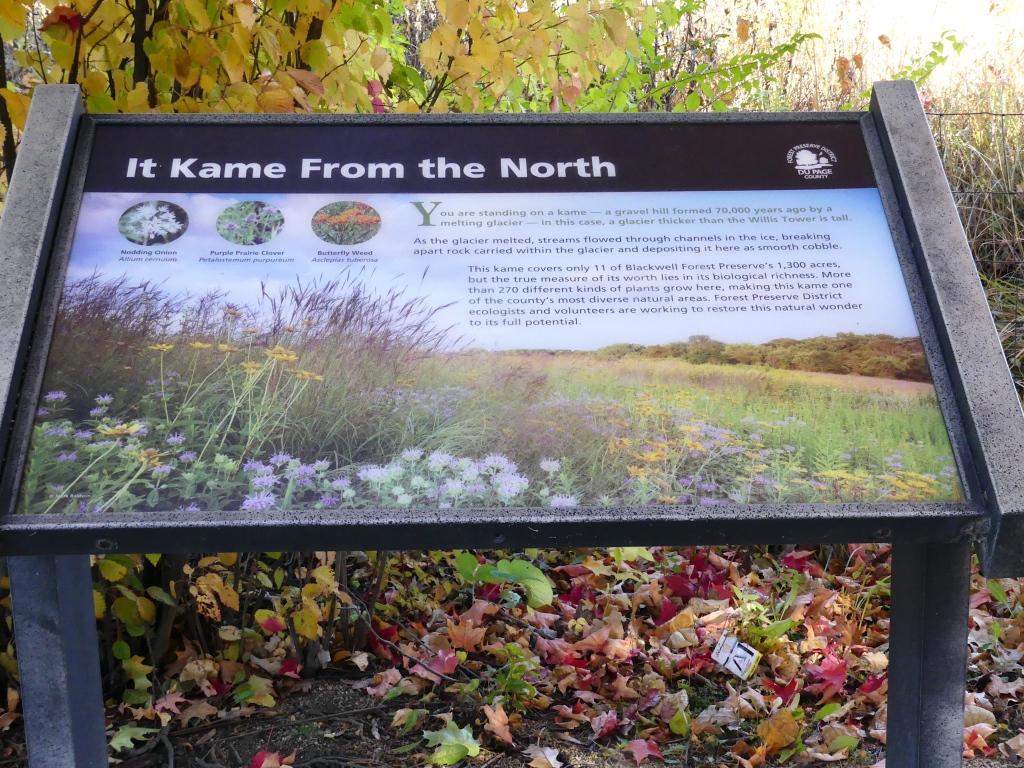
The trails by the prairie are lined with tree color.

It would be a shame to walk quickly, and not take time to admire the leaves. Look at that sumac! It’s a jeweled kaleidoscope. Change your point of view and watch the light play with the colors and patterns.
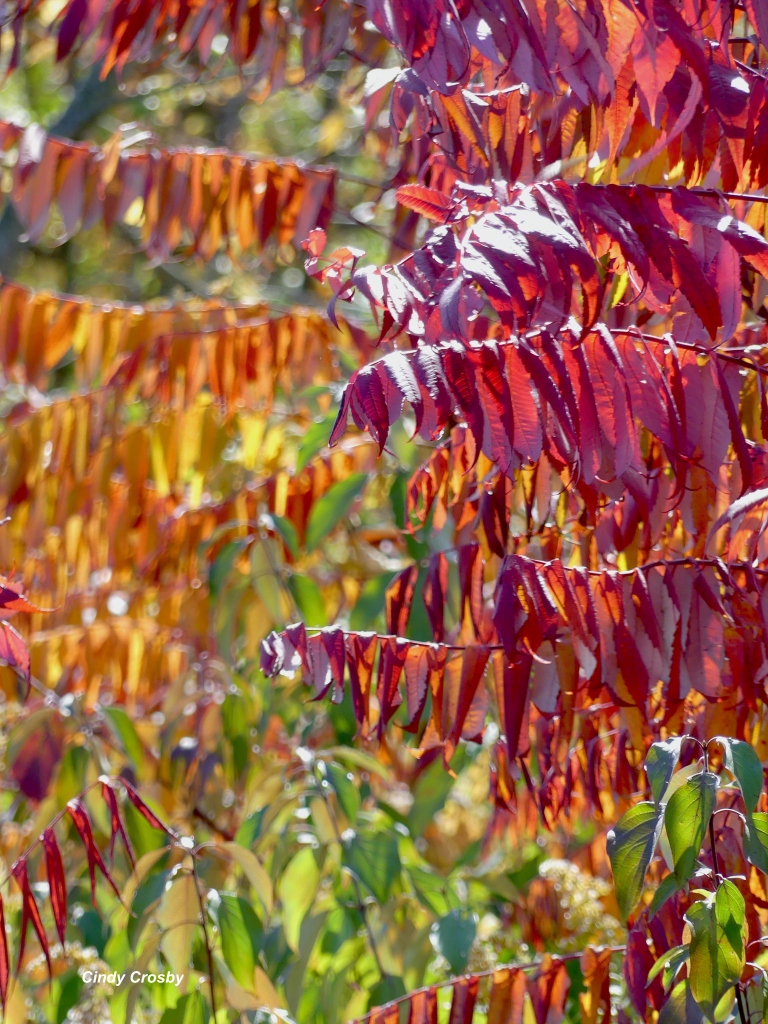
Beautiful? You bet. This sumac is native but a bit aggressive, so a mixed blessing on the prairie. Speaking of which…look at those tints and tones; shades and hues.

Smooth blue asters, a pop of color.
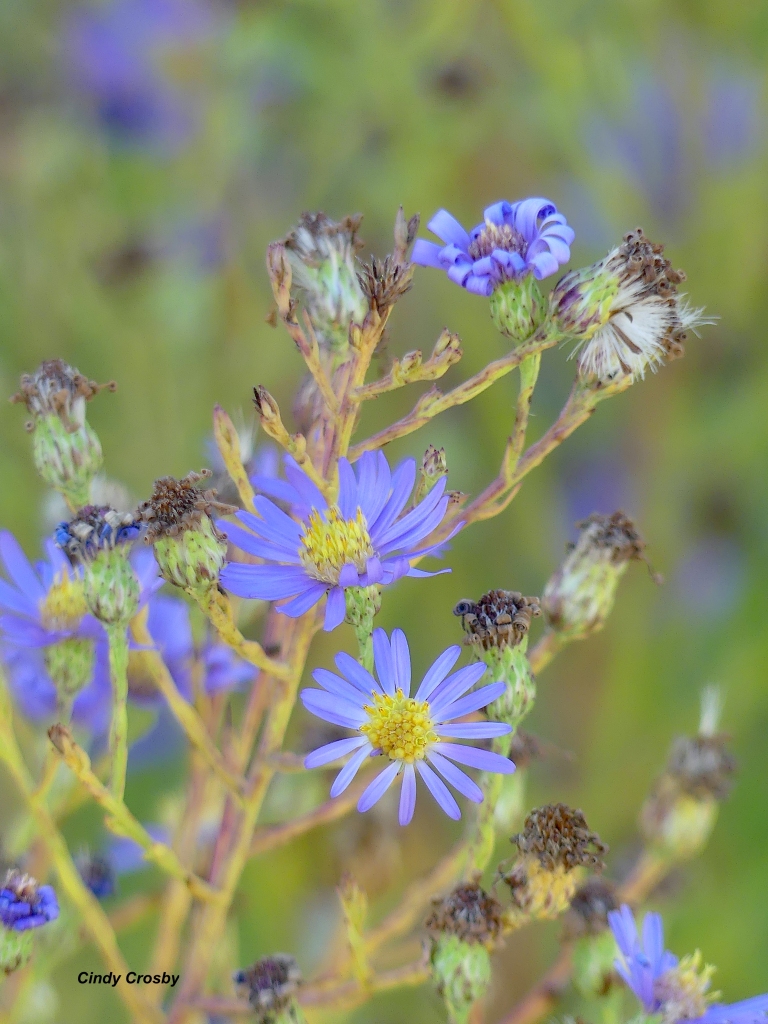
So many asters here that I struggle to identify! My iNaturalist app says to choose between common blue wood aster, Drummond’s aster, and a few others on the aster in the photo below. I’m still unsure; there’s a little “taxonomic instability”—as Illinois Wildflowers notes—between some of the species.

New England asters pump purples. At least there is one aster species easily identifiable!
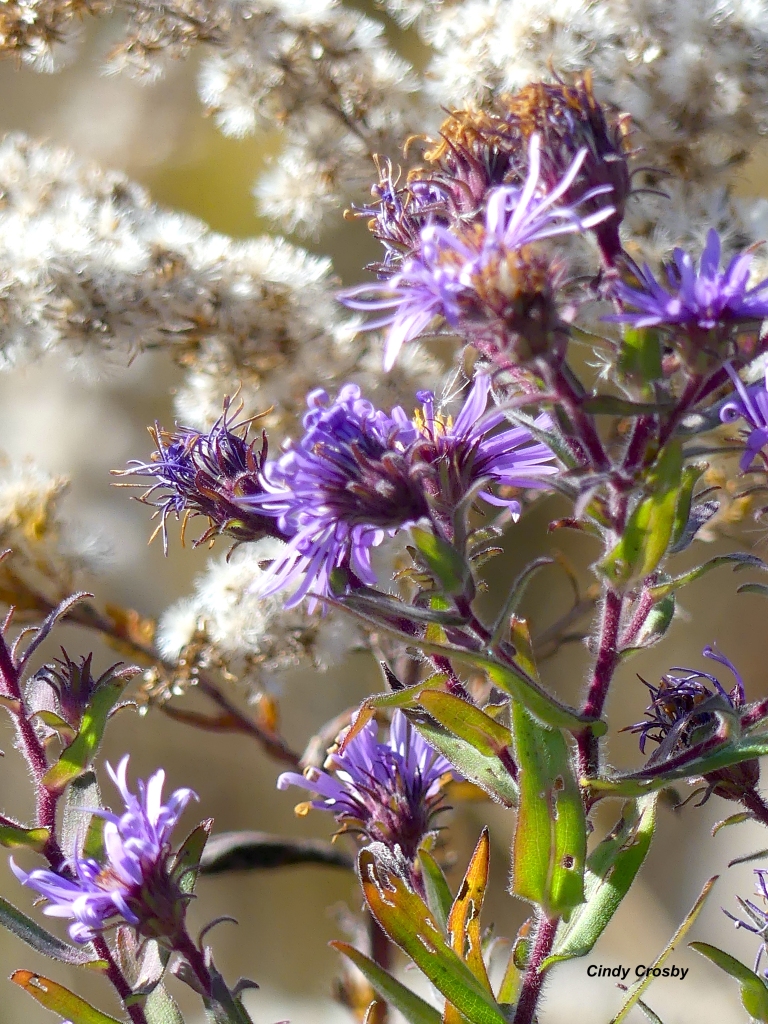
More sumac glows, as beautiful as any flower.
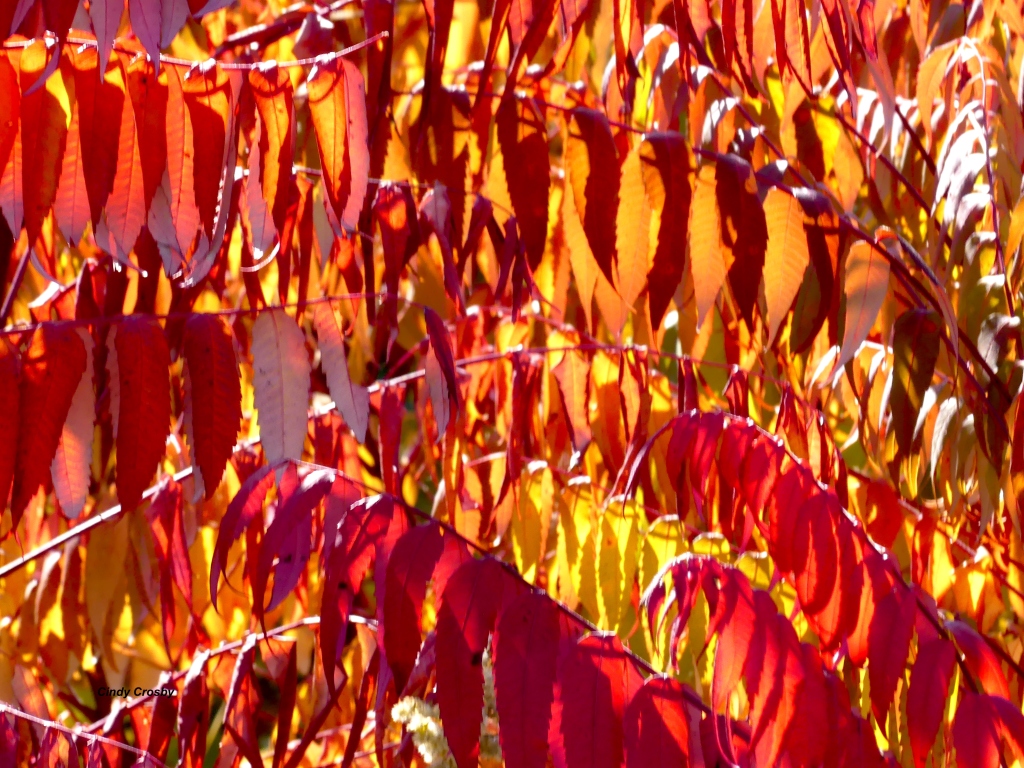
And the grasses! Let’s talk about the grasses. Look at the little bluestem…
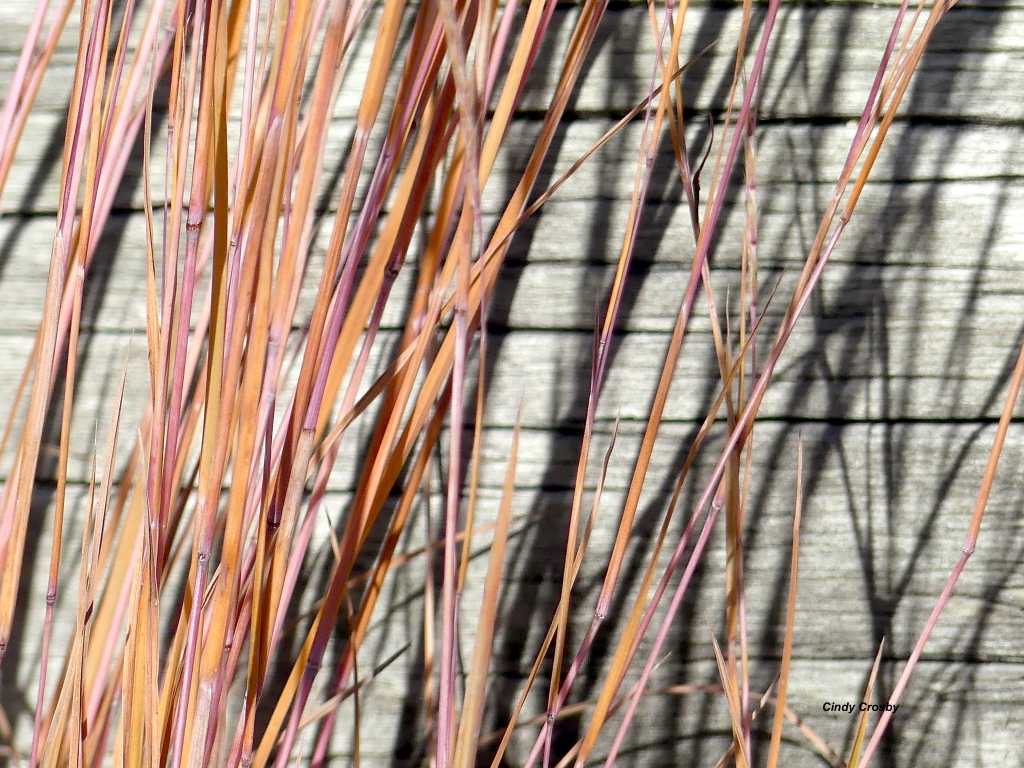
…Indian grass…
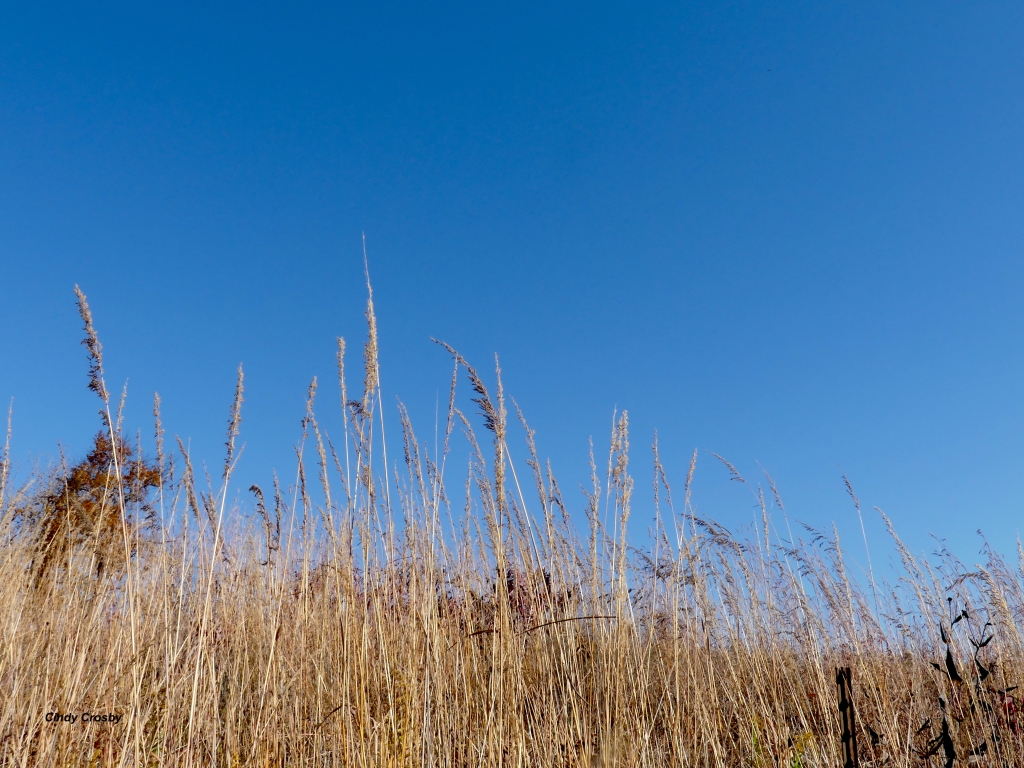
…paired with “spook-tactular” switchgrass.
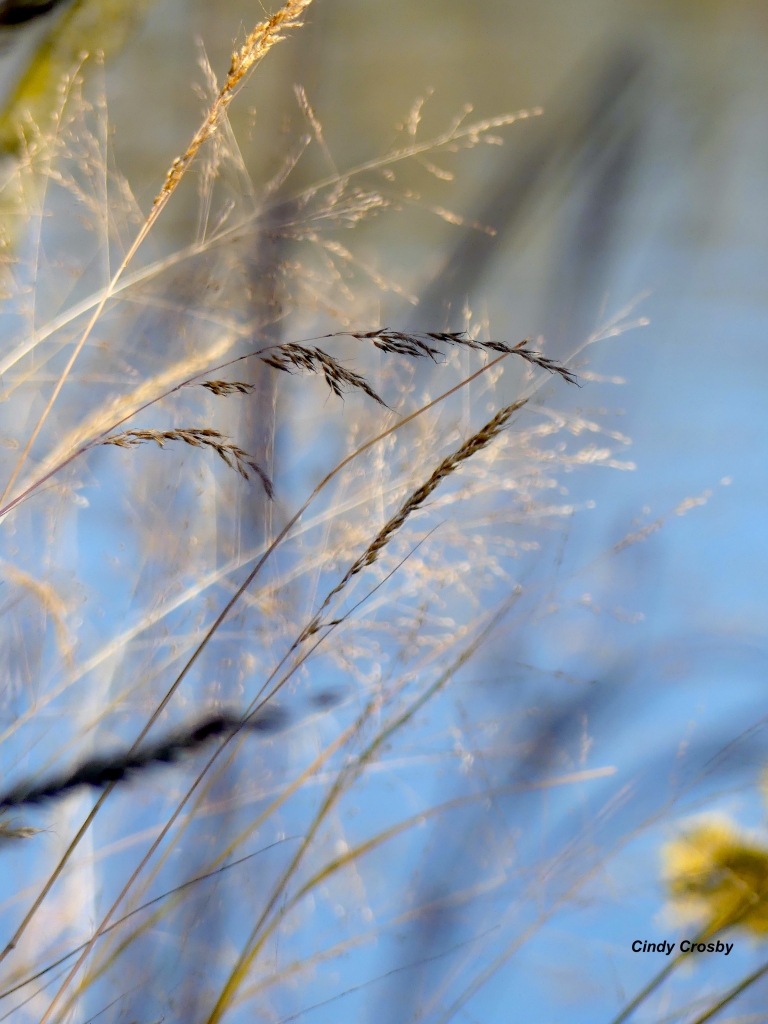
Bewitching big bluestem.
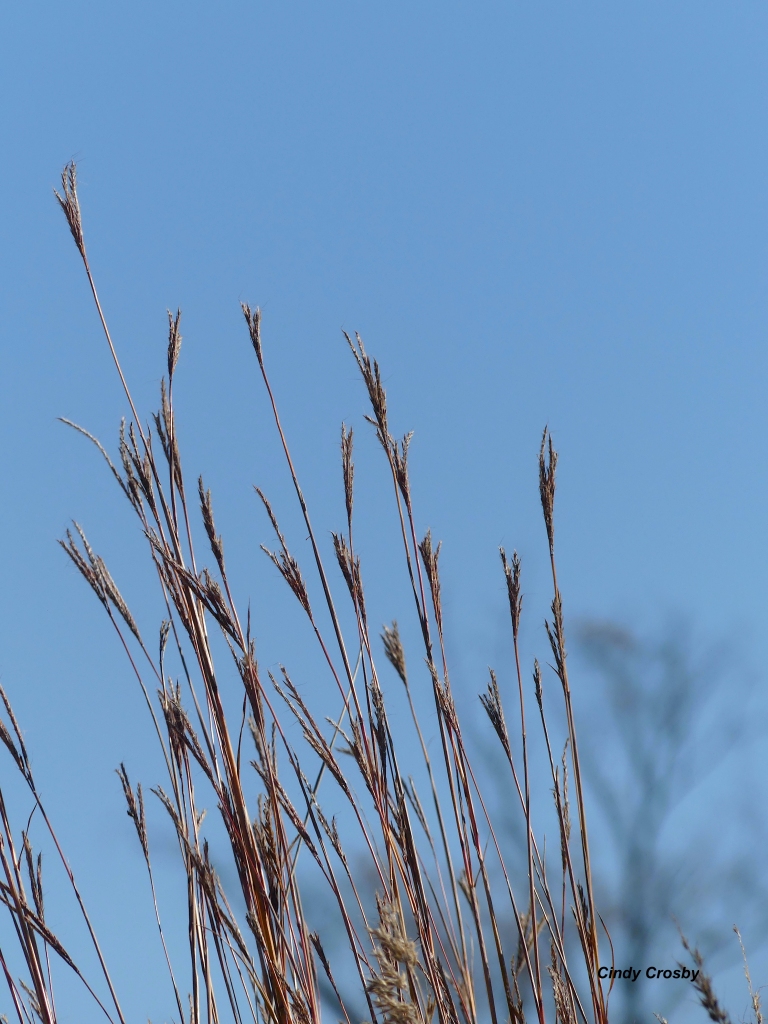
Sideoats grama—the state grass of Texas and an Illinois native—are all at peak.

The seeds of rosinweed mimic the recent flowers, now spent.
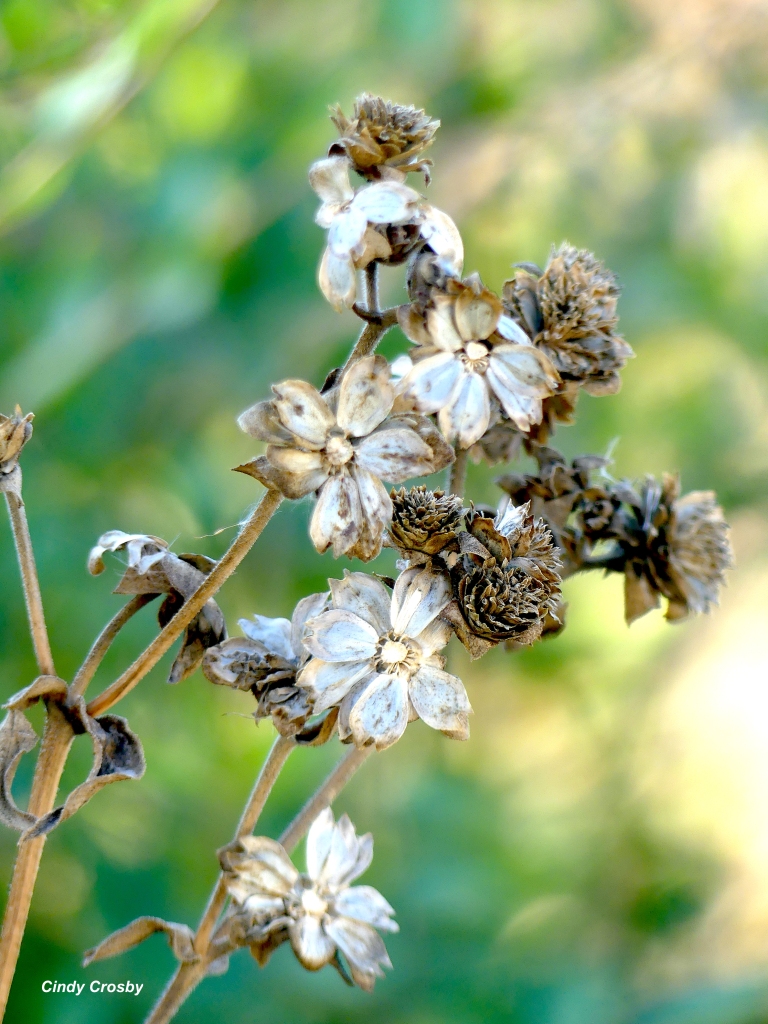
Everywhere, the prairie wildflowers have gone to seed. A sea of fluff.
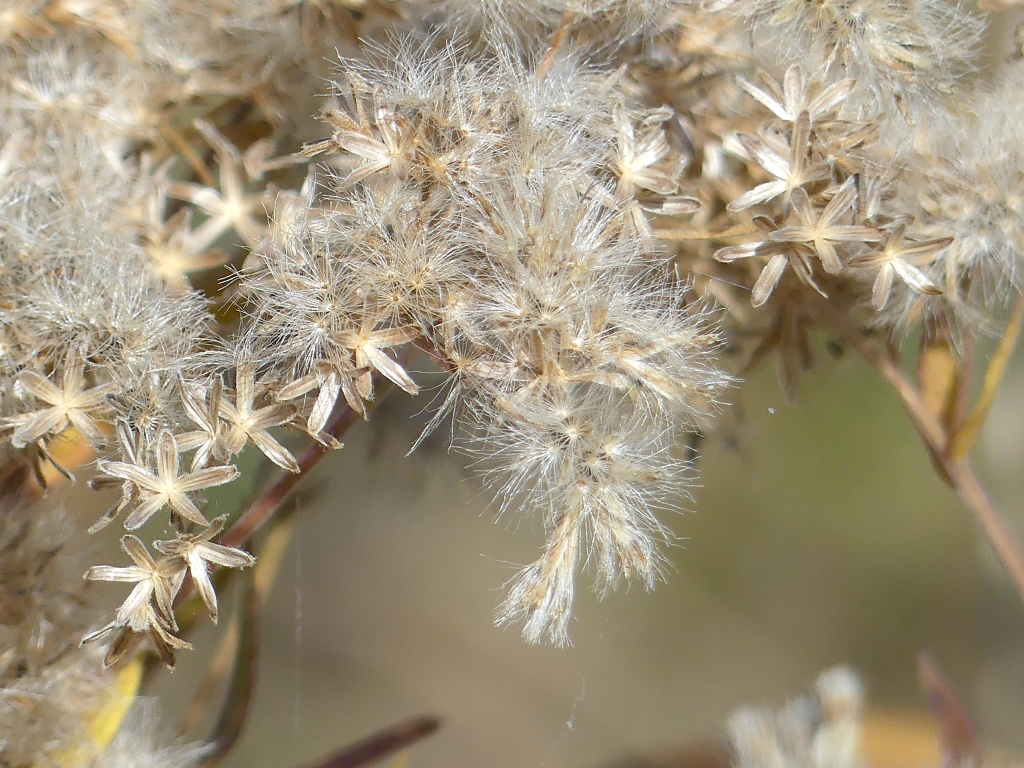
The winds and rain will put paid to the glorious autumn foliage this week.
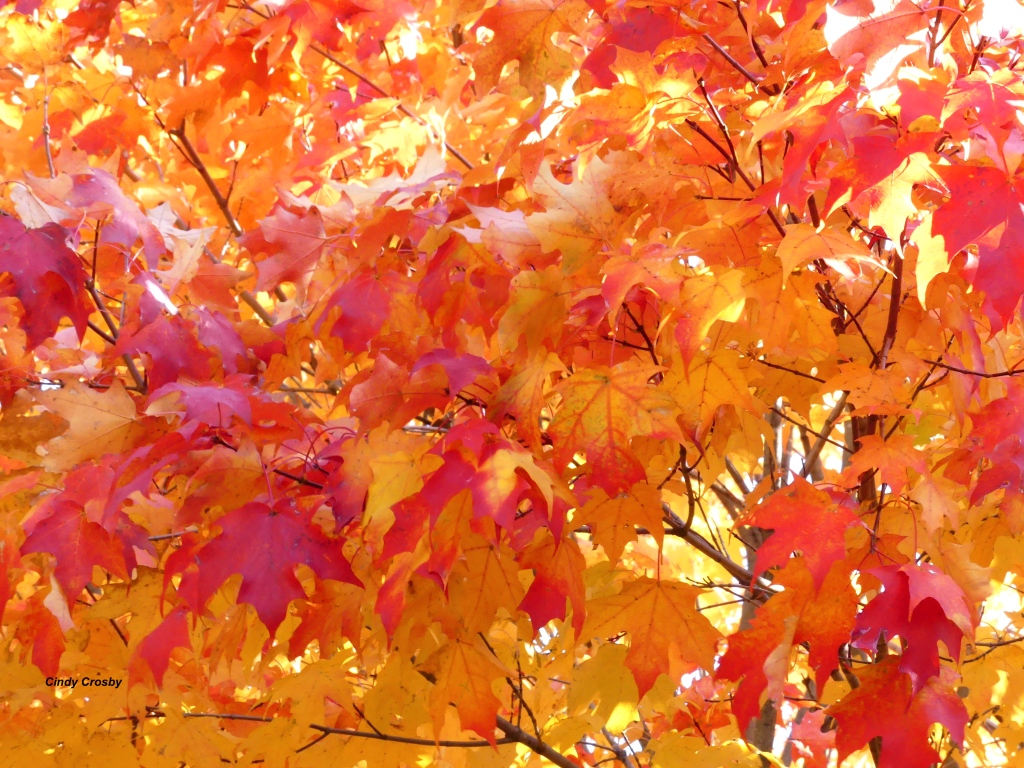
I’ll keep the images of hiking this prairie trail tucked away in my mind to delight in this winter. When the snow flies, I’ll close my eyes and remember the colors…

…and be haunted by the memories…

…of this glorious autumn day in the prairie.
*****
The quote that kicks off this blog post is by Paul Gruchow (1947-2004) from his essay “Autumn” from Journal of a Prairie Year. His prairie essays are among my favorites, especially “What the Prairie Teaches Us” from Grass Roots: The Universe of Home. Both books are published by Milkweed Editions.
“*****
Upcoming Programs and Classes
Saturday, November 5, 2022 (10-11:30 am) —Winter Prairie Wonders, hosted by Wild Ones of Gibson Woods, Indiana, in-person and via Zoom. For more information on registering for the Zoom or for in-person registration, visit them here.
Saturday, November 12, 2022 (1-2:30 p.m.) Add a Little Prairie to Your Garden, hosted by the Antioch Garden Club, Antioch, IL. Free and open to the public, but you must register. For information and to inquire about registering for the event, visit the Wild Ones here.
Wednesday, December 7, 2022 (6:30-8:30 p.m.) 100 Years Around the Arboretum. Join Cindy and Library Collections Manager Rita Hassert for a fun-filled evening and a celebratory cocktail as we toast the closing month of the Arboretum’s centennial year. Register here.

Beautifall
LikeLike
Thanks for sharing the beautiful colors of fall! I miss them…
LikeLike
Once again you have shared the beauty of the prairie with us! Sun backlighting autumn leaves is just breathtaking! And who would think that photo of the Symphyotrichum aster was an aster? Beautiful. All beautiful.
LikeLike
Enjoying your fall colors and the life cycle of the prairie. Our totems, agaves, and saguaros remain unchanged against a sunny blue sky. Thank you!
LikeLiked by 1 person
The colors are spectacular this year!! Thank you for sharing the new term to me: prairie kame. I’ve heard it twice in just a few days. Hope to visit & see for myself!
LikeLike
I am wondering about the colors displayed in the centers of the asters that I have, and also those you pictured (so beautifully!) in today’s post. Is it, as in various other flowers I know of, a signal of the availability (or lack thereof) of pollen?
LikeLiked by 1 person
Hi Carol — Thank you so much for reading, and for your kind compliments. I would defer here to this article — fascinating stuff! I hope you enjoy it.
https://www.indefenseofplants.com/blog/2016/9/28/color-changing-asters
Happy hiking! Cindy 🙂
LikeLike
As always, thank you for this lovely walk.
LikeLike